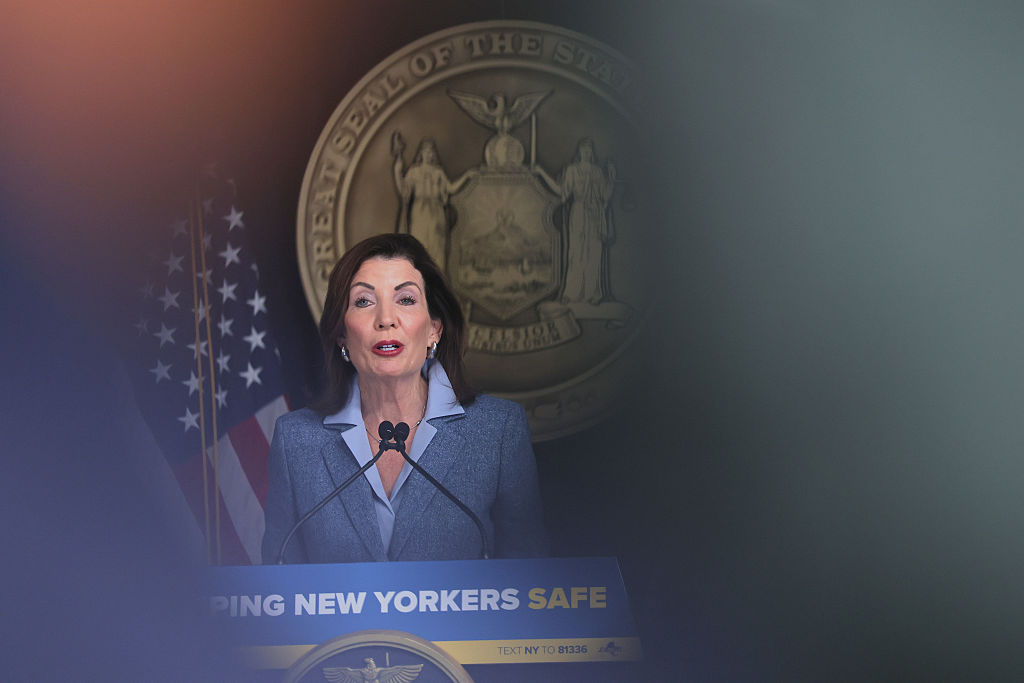The New York Times Carefully Documents Where Pro-Abortion Movement Went Wrong

The New York Times has been the abortion movement’s most powerful and faithful megaphone over the decades. But on the very day the Supreme Court took up oral arguments in a major case that could unravel Roe, The Gray Lady published a lengthy requiem of the pro-abortion movement itself.
Its appearance is a dramatic mood indicator of the pro-abortion movement, writ large. That mood is decidedly dark. Written by Amy Littlefield, whom the Times refers to as “the abortion access correspondent” for the historically liberal magazine The Nation, this detailed and lengthy piece could be seen as the first draft of the “What went wrong with abortion?” story in the United States.
The Times ruefully admits, “The Supreme Court, with its three Trump-appointed justices, appears willing to decimate, if not overturn, Roe. And the abortion-rights movement and its supporters in the Democratic Party have failed to stop this from happening.” Before SCOTUS has even rendered a verdict in the Mississippi case, Littlefield recognizes that the so-called “pro-choice” movement is now “being forced to reckon with its mistakes.”
And those mistakes are admittedly profound.
Littlefield begins her catalogue when more than 600 abortion clinics around the country, along with their biggest political allies, seriously botched a critical September 2 strategy Zoom meeting in response to the Supreme Court’s refusal to block the Texas Heart Beat Bill. The call had to be abruptly canceled and apologized for because an unknown participant uttered a racial slur and asked to speak to “the man in charge.” One of these call’s leaders declared, “We should actually cancel this call, and let’s shut it down. It’s been compromised.”
But mistakes made go much deeper, and are far more consequential, than this.
First is the recognition that the pro-abortion move had been put in a deeply unsettling defensive position for many decades now by an increasingly smart and effective pro-life movement. They quote one activist from the group SisterSong as complaining, “I think that when you’re in a defensive position, it’s hard to not be last-minute. You’re having to play catch-up all the time,” adding, “when you’re constantly fighting, it’s hard to be proactive and to think long term.”
Working from interviews with more than 50 leading abortion advocates and legal experts across the country, the Times explains the movement’s chief mistake was neglecting organizing at the local and state levels in favor of a more fly-over, national strategy that was woefully unsuccessful in defending abortion through federal courts and policy.
This oversight “opened the door to states chipping away at abortion access through incremental restrictions — a trend that accelerated after the 2010 midterm elections, when a Tea Party-backed wave swept state legislatures.” The Times laments the failure, “Investing in states matters because states are often laboratories for a movement’s boldest ideas” such as the innovative pro-life Texas Heart Beat Bill.
This allowed the pro-life movement to blossom at the grass-roots level while the pro-abortion effort grew fat and lethargic. The Times noted that the National Right to Life Committee had a staggering 3,000 local chapters by the late 1970s and only continued to grow in effectiveness in the following decades. Meanwhile NARAL, a leading abortion advocacy organization “devoted so few resources to its state affiliates that by the 1990s its national field department quit in protest.” Their local affiliates shrank to only 11 and then finally fizzled out this summer, according to the Times.
It is admitted that the local fight had largely been ignored in the pro-abortion strategy, while the pro-life effort excelled there. U.S. states enacted 1,336 pro-life statutes since 1973. This meant that Planned Parenthood, who only employed a single attorney in the 1980s, had to hire 16 more who, even now, are “dealing with about 40 open legal cases” at the state level.
The Times admitted that the “national movement’s strategy of relying on the courts as a firewall meant that advocates were often playing Whac-a-Mole against the growing onslaught of anti-abortion laws coming out of the states.” They also observed, “In the decades since Roe was decided, the pro-choice movement’s fears and weaknesses emboldened the other side. While national abortion-rights groups shied away from many state fights, their opponents took control of state legislatures and gerrymandered districts to lock in control.”
The Times admits that much of the pro-abortion movement is in tatters with “painful divisions that these leaders must heal — between black women and white women, between national groups and state ones, and between those who couldn’t imagine how catastrophically the nation’s political institutions would fail, and those who knew that they would.”
And all because faithful men and women, boys and girls, with deep pro-life conviction stepped up and strategically worked their fingers to the bone, at great personal cost, at the community level. That work has, and is now, paying massive dividends for Life.
Photo from Shutterstock.
ABOUT THE AUTHOR

Glenn is the director of Global Family Formation Studies at Focus on the Family and debates and lectures extensively on the issues of gender, sexuality, marriage and parenting at universities and churches around the world. His latest books are "The Myth of the Dying Church" and “Loving My (LGBT) Neighbor: Being Friends in Grace and Truth." He is also a senior contributor for The Federalist.
Related Posts

Correcting the White House: God Became Man at Conception, Not Birth
December 10, 2025

The Telephone Used to Save Lives. Now It Takes Them.
December 9, 2025


